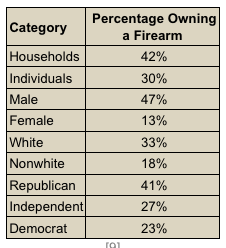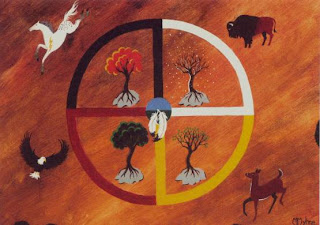1. Although I don't practice Ashtanga, I'm attracted to the culture it generates insofar as I know it. I tend to connect intellectually with Ashtangis more than any other identifiable group of practitioners. I feel that the method attracts a relatively high percentage of smart, independently-minded people. From my outsider's perspective, it seems that the Ashtanga community has an exceptionally interesting, serious, engaged culture. I like that.
2. I'm strongly in favor of making yoga more available in institutions such as schools, hospitals, and prisons, as well as in underserved and socially marginalized communities. As a teacher, I find yoga outreach . I'm an unashamed booster of the not particularly popular notion of .
Soooooo . . . you'd think I'd not only be super-supportive of the fact that the Jois Foundation gave a $500,000 grant to the Encinitas schools to fund a district-wide yoga program, but also stand staunchly by them as the maddening lawsuit that grant generated drags on. And this would be true, except for the fact that . . .
3. I believe strongly not only in the values of multiculturalism, but in the need to actively engage them in practice if we're to have any hope at all of healing some of the divisions in our frighteningly polarized society.
 Although multiculturalism is rightfully associated with left-of-center political values, I've always believed that it's got to be applied evenly across the board. And when it comes to the current lawsuit over the constitutionality of teaching yoga in public schools, that means treating the conservative Christians involved with equal consideration and respect, whether one agrees with them or not.
Although multiculturalism is rightfully associated with left-of-center political values, I've always believed that it's got to be applied evenly across the board. And when it comes to the current lawsuit over the constitutionality of teaching yoga in public schools, that means treating the conservative Christians involved with equal consideration and respect, whether one agrees with them or not.And that's why - despite being being strongly opposed to the conservative Christian political agenda - I'm nonetheless moved to say that I think the plaintiffs in Encinitas have raised some legitimate questions about the Jois Foundation grant.
In fact, the more that I read through the Jois Yoga website, and search in vain for some sort of statement they may have made about the many important issues raised in this case, the more frustrated I feel. At this point, I'm simply wondering:
What the hell is up with the Jois Foundation??
"Inherently Religious"?
But this litigation is much more tricky than that. Because the case was not, of course, filed to judge "yoga" in the abstract: it was filed against the Encinitas program in particular. But now that it's up and running, there's a (most likely calculated) slipperiness between the attack on "yoga" writ large and the specific program in Encinitas.
And that slipperiness bodes ill both for the reputation of yoga in more religiously conservative communities (which, after all, is a good bit of the U.S.) as well as its status in publicly funded institutions such as schools, hospitals, prisons and so on.
When I first researched the Encinitas case I was not surprised to learn that the plaintiffs were associated with a conservative Christian activist group and represented by a conservative Christian legal advocacy group. and have a good understanding of how its interlinked network of right-wing think tanks, foundations, law firms, and activist groups operates - and how powerful it is.
Though expected, this discovery revved up my righteous indignation. I'm profoundly dismayed and certainly somewhat alarmed to see yoga dragged into the juggernaut of litigious culture wars that's been churning on now for decades.

|
| Yoga teacher Jennifer Brown demonstrating Lotus at the Encinitas trial |
Still, ever the obsessive researcher, I started looking for information on the Jois Foundation online. I expected to find material explaining precisely how and why the Foundation's grant-making program differed from Jois Yoga's overall commitment to Ashtanga. After all, I understood the argument being made in court was that the Encinitas program doesn't represent Ashtanga per se. Instead, it's an exercise-oriented program developed under the authority of the school district to support children's health and well-being.
I believe this to be the case. I certainly don't think that the Encinitas program is really designed to indoctrinate kids into Hinduism. On many levels, I find that claim completely absurd.
But.
The fact of the matter is that if you read the Jois Yoga website, it's full of what can only be described as religiously-inflected spiritual language. And of course, that would be fine, except for the fact that there's virtually nothing on the Jois Foundation side of fence to balance it out.
"Our Website is Underway"
While the plaintiffs are being ridiculed in court and across the internet as irrational fanatics who refuse to accept the obvious fact that yoga is exercise, the Jois Yoga website describes the Ashtanga method as “an ancient system that can lead to liberation and greater awareness of our spiritual potential.”
While I'd quibble with the "ancient system" claim, that's fine as far as it goes within its appropriate context. But it does raise some legitimate questions regarding precisely how this understanding of yoga is being translated into a program that's appropriate for children from diverse backgrounds attending a public school.
These questions intensify dramatically once you start perusing the "Philosophy" page of the website, which presents a series of "Conference Notes with Sharath Jois" from 2011-12. These notes not only contains a lot of religious-sounding language, but buttress some of the plaintiff’s more seemingly outlandish claims as well.
For example, many commentators have derided the plaintiffs as idiots for charging that Sun Salutations could be in any way connected to worshiping a “sun god.” Yet, the Jois Yoga website explains that Ashtanga founder Pattahbi Jois taught Sun Salutations “for two reasons”:
To pray to the sun god each morning would insure good health . . . Also, the Sūrya Namaskāra is used in our practice . . . to create heat in the body and help us do other postures.Now, this is the first time in 15 years of practice that I’ve ever heard of “praying to the sun god” in any context connected with yoga. Regardless of this statement, I don't believe that 99.9% of American yoga practitioners have any clue that such a linkage has ever been made - and if they did, they'd either dismiss it as fanciful metaphor, or disapprove. Nonetheless, the fact that it’s stated on the Jois Yoga website is obviously relevant to the Encinitas case.
Again, this wouldn't be so bad if there was robust and compelling information available explaining precisely how the Foundation's grant-making program differentiates itself in terms of both philosophy and practice. Unfortunately, I've looked a good bit for such information, and as far as I can tell, it isn't there.
Instead, there is a single web page on the Jois Yoga site that only explains the Foundation's program very briefly and vaguely:
Our Health and Wellness Program for Children . . . uses the techniques of yoga, meditation, and proper nutrition to create a positive lifestyle change.There's a bit more, but not much. Most of the font on the page is too small and hard to read. One sentence stands out in bolded caps at the bottom, however:
OUR WEBSITE IS UNDERWAY.
Whaaaaaaatttt??? The Jois Foundation has given over half a million in funding to the Encinitas school district, produced a , sparked a lawsuit that could have a seriously negative impact on the evolution of yoga in American society and . . . their website is underway??
AARRRRRGGGGH
To be sure, the fact that the Jois Foundation funded the Encinitas program isn’t by itself enough to discredit it. The EUSD insists that it had complete control over the curriculum, and no interest in or knowledge of yoga as anything other than exercise. To bar the program simply because of the beliefs of its funders would be discriminatory. That said, one really has to wonder just what the Jois Foundation was thinking when it launched this initiative without more adequately addressing the obvious legal, educational, cultural, and religious issues involved.
Our website is underway?! How about a robust website that explains the philosophy behind the yoga in public schools grant-making program in depth? How about some appropriately useful resources, such as a study of best practices in that field? How about consultations with experts who have been successfully implementing yoga in schools programs for years? How about a resource page of studies assessing the positive benefits of yoga for kids? How about a stated commitment to respecting the diverse religious commitments of a multicultural society, along with a detailed account of why yoga is well-suited to being adapted to all faith traditions - and none?
If the Jois Foundation were a strapped, struggling effort of politically naive, but well-meaning yoga aficionados who had no way of putting all that together, that would be one thing. But that's not the case. Jois Yoga has a lot of money. If they didn't, you can bet that the National Center for Law and Policy wouldn't have bothered to take on the case.
 |
| Contemplative Sciences Center website: uvacontemplation.org |
What's even more galling to me is that beyond their financial resources, Jois Yoga is already connected with an academic research center, the Contemplative Sciences Center at the University of Virginia. This Center was established in 2012 thanks to a $12 million grant from "billionaire alum Paul Tudor Jones and his wife Sonia," the same couple that funded and created Jois Yoga.
The mission of the Center sounds wonderfully multidisciplinary and innovative:
The mission of the Center sounds wonderfully multidisciplinary and innovative:
to foster dynamic partnerships of unusual depth and breadth towards exploring the transformative impact of contemplation in a variety of social sectors. Binding together the humanities and sciences, we are pursuing serious programs of learning, research, and engagement across the liberal arts, sciences, health sciences, medicine and nursing, education, architecture, business research, policy making, contemplative practice, and more.
A quick glance through the website confirms that there's a lot of interesting work going on there. Yet . . . when you search "Encinitas" on the site, nothing comes up. Search "yoga" and six listings come up. Further fueling my frustration with the entire situation is the fact that one of them is titled, "Gurus on Grounds" ("Please join an extraordinary opportunity for contemplative experience and learning under expert guidance as world-renowned master teachers Sharath and Saraswathi Jois teach Ashtanga Yoga practice to a large public gathering.") Arrrrgghhhh.
What. The.
What. The.
On the one hand, I really do feel rather churlish complaining about the Tudor Jones charitable work. After all, they've contributed millions of dollars to visionary endeavors I strongly support, such as furthering contemplative studies and bringing yoga into the public schools. Such public-minded use of private wealth is all too rare today, and (political concerns about the destructively unequal distribution of wealth in the U.S. aside), I certainly appreciate it.
On the other hand, I feel enormously frustrated that with all these resources, the Encinitas case seems to have been handled in an embarrassingly inept and potentially destructive way. The level of disconnect between the reality of the culture wars on the ground in American society and the lofty vision of expanding the reach of yoga and contemplative practices in the U.S. strikes me as stunning - not to mention discouraging.
Threading through the Encinitas case is a vagueness about the relationship between Ashtanga yoga (as understood and promulgated by Jois Yoga) and American yoga as a much bigger, and highly diversified phenomenon. The Jois Foundation has simply not, as far as I can see, drawn a bright line between their school-based yoga programs and their commitment to the Ashtanga method.
This fuzziness raises legitimate concerns among conservative Christian parents who are sincerely concerned about the spiritual development of their children. Honestly, I were a conservative Christian who knew nothing about yoga other than what was happening in Encinitas, it would be entirely possible to read the Jois Yoga website and freak out about a possible “Hindu invasion.”
Potentially, some of these unnecessary concerns could have been alleviated with better program development and implementation procedures. For starters, a clear and thorough separation between the Ashtanga and school-based methods needed to be made internally, and stated publicly. Then, community outreach and parent-teacher conversations could have built bridges between the yoga program and worried parents.
Of course, some of the opposition would never have been won over regardless. I wouldn't expect the Encinitas parent on the staff of truthXchange (a very strange-sounding conservative Christian activist group committed to combating the supposedly rising tide of global paganism) to accept yoga (in schools or otherwise) as OK no matter what.
In my experience, however, most conservative-leaning Christians who are not hardcore activists are very open to accepting yoga if they felt that their concerns are heard and addressed. Given yoga is not inherently religious, and is in fact intended to be open to supporting all faith traditions (or none), this is not difficult to do.
If we keep steamrolling forward as we have been, however, we'll never have the chance to find out. The lack of clarity about the Jois Foundation's grant-making program has provided a prime opportunity for zealous conservative Christian activists to reframe the understanding of yoga in schools, both culturally, politically, and legally. And with some smart, seasoned, and committed leadership in place, they know how to leverage the opening that Encinitas has provided.
It wasn't an accident that the first lawsuit to challenge yoga in the public schools didn't involve on of the many school yoga nonprofits run by experienced educators who understand the school system from the inside out. No, this case was selected for solid political reasons. And it frustrates me no end that the side I'm backing seems to be ignoring the mountains of evidence showing that we have a problem here, Houston. Instead, they keep insisting over and over that anyone with any intelligence understands that "yoga is exercise."
Sigh.
Hopefully the judge will render a smart, incisive, balanced, and original position that reframes the many important issues involved in this case in more constructive ways. Because right now, I'm not liking the direction it's going, at all.
Please also check out my recent post on Yoga U Online: "Yoga on Trial: Encinitas and the Need for a New Paradigm."


































